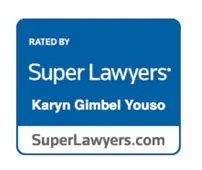When parents are going through a divorce, they usually want to do all they can to protect their kids. If you and your ex have the shared goal of ending your marriage with minimal conflict, it can make things easier for you and your children. Here is more on low-conflict divorce and your kids:
Low-Conflict Divorce
Low-conflict divorce is a term used to refer to a divorce when the parties do what they can to limit fighting. Taking this approach to divorce does not mean you and your ex won’t have negative emotions or disagree. Instead, it means trying to work amicably when possible and avoiding unnecessary disputes.

Low-Conflict Divorce and Your Kids
When parents have a high conflict during divorce, they tend to devote excessive energy towards fighting one another. Being in this state can leave them without the emotional reserves they need to support their children.
During a divorce, kids can have confusing and painful emotions, and they need to be able to rely on their parents to be there for them. When kids are exposed to their parents’ conflict, their feelings can become more intense and difficult to manage. By contrast, when parents commit to keeping their disputes and conflict to a minimum, it can help reduce stress for them and their children. This approach can also provide parents with more energy to devote to emotionally supporting their children and meeting their needs.
Low-Conflict Divorce and Unnecessary Comments
Being there for your kids during divorce means being emotionally present to hear their concerns. In addition, your children need to feel you can provide them with safety and stability. When parents disparage one another in the presence of their kids, their children can experience intense anxiety and be made to feel less secure. It’s important to recognize that making these kinds of comments around your kids is harmful.
Children are not adults, and they often process negative statements about their parents as being about them. They also may believe the divorce is in some way their fault. Deciding to have a low-conflict divorce means committing to fighting as little as possible with your ex. However, it also involves not engaging in conduct that will negatively impact your kids and their relationship with the other parent.
Low-Conflict Divorce Methods and Your Kids
When parents commit to having a low-conflict divorce, it can be good for everyone involved. However, in some situations, it may be difficult to know how to navigate this type of case. Some divorce methods are designed to support a low-conflict goal. For instance, Collaborative Divorce is a type of divorce that involves both sides agreeing to cooperate and be open with information.
This type of divorce allows the participants to work with trained Collaborative Divorce attorneys and neutral professionals to clarify and resolve their disputed issues. The Collaborative Divorce process’s focus is to consider everyone’s point of view and find ways to reach an equitable and peaceful resolution. In this type of divorce, kids may see a child specialist who can help convey their perspective and make recommendations to parents.
Parents may also choose to have a low-conflict divorce by attending mediation or negotiating custody, placement, and the terms of their divorce through their attorneys. All of these methods can be low-conflict and can be used to help support you and your children.
Work with a Low-Conflict Divorce Attorney
Regardless of the type of divorce, those looking to have a low-conflict divorce will benefit from working with a low-conflict divorce attorney. A low-conflict divorce attorney can assist you in understanding the issues and avoiding unnecessary conflict.
Contact an Experienced Divorce Attorney
Wisconsin Attorney and Mediator Karyn Youso of First Look Family Law is a low-conflict attorney and Mediator with the experience you need to help you and your family with your Wisconsin divorce case. If you live in Metro Milwaukee, Waukesha, or Brookfield and have questions about representing yourself when your ex has an attorney, please contact us today and let us take a “first look” at your situation.










